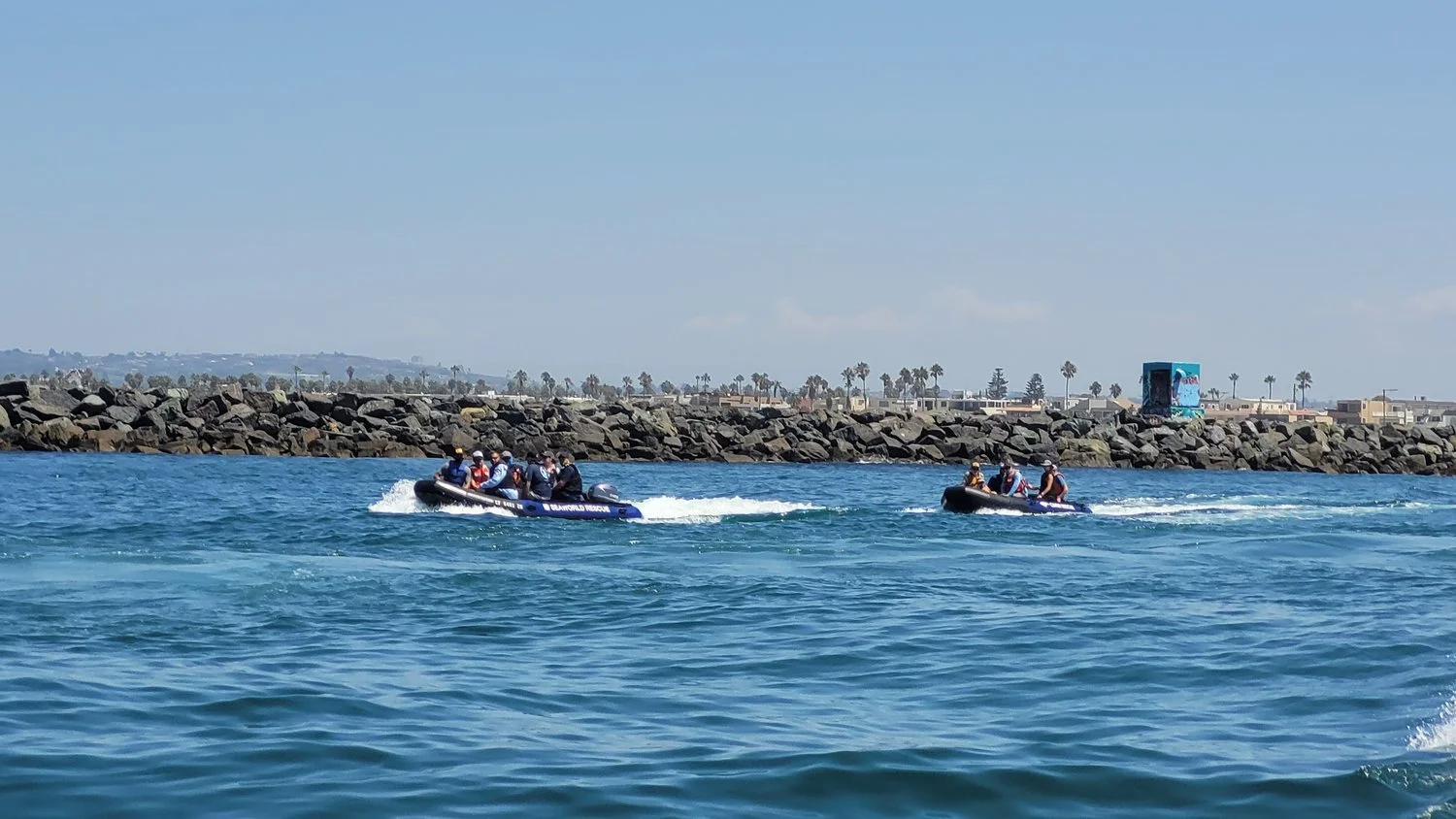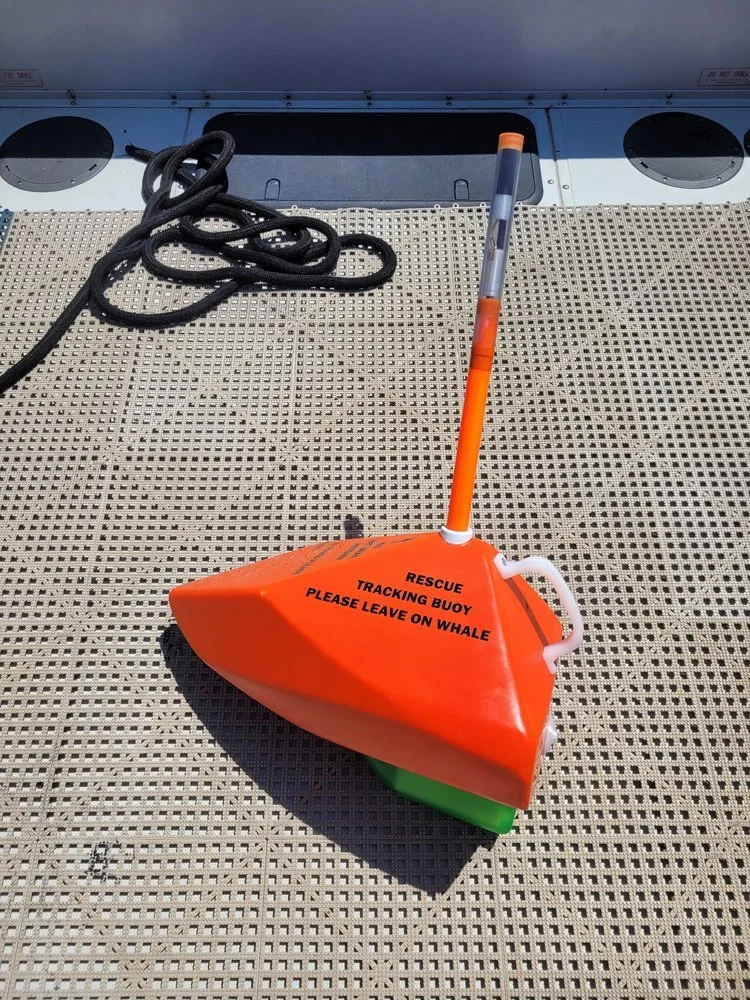SR3 Participates in Trainings Featured in NOAA’s West Coast Whale Entanglement Report
Responders train in rescue boats along the California coast during the international whale entanglement responders meeting in 2022.
Every year, dozens of entangled whales are reported by boaters, fishermen, marine agencies, and the public. The recently-released 2022 Entanglement Summary by National Oceanic and Atmospheric Administration (NOAA) Fisheries shows that in 2022, entanglement reporting on the West Coast was higher than what had occurred before 2014, although reports were less frequent than they were during the peak years of 2015-2018.
To ensure SR3 stays on the forefront of technological advances in marine wildlife rescue and rehabilitation, SR3’s Response Program Manager, Dr. James Powell, attended NOAA’s West Coast entanglement training along with responders from the East and West coasts of the US, Mexico, and Canada (see page 3 of the Entanglement Summary for more details). They reviewed recent responses to entangled whales, and analyzed new disentanglement tools and techniques.
A new tool the group was introduced to was a prototype satellite tracking buoy that the Nature Conservancy has developed. Often when an entangled whale is located and a response mounted, there is not enough safe daylight left to operate. In these cases, attaching a satellite tracking buoy to the entangling gear so the whale can be relocated on subsequent days is vital.
This new design for a satellite tracking buoy is more hydrodynamic and lighter weight than the current tracking buoy.
This newly-developed satellite tracking buoy has a profile that is more hydrodynamic than the buoy currently in use. The new design will reduce the drag placed on the entangled whale and is lighter in weight, making it easier for responders to deploy. It also relies on advanced technology that increases tracking accuracy for real-time relocation. In the waters where SR3 responds to entangled whales, it will be particularly helpful because the traditional tracking system relies on satellites that do not align well with the daylight working hours in our area. The new buoy will help to bridge that gap.
SR3 has submitted a request to NOAA to help fund the production of this new prototype tracking buoy for use in the waters off the West Coast. Additional funding will be needed to test the new prototype in parallel with the traditional system, and then to show responders how to deploy the buoys. Since the West Coast entanglement training, Dr. Powell has had many conversations with the leaders of other marine mammal rescue and research organizations on how they can incorporate this new response technique into their existing protocols once production of the buoy systems is complete.
By collaborating with other groups responding to whale entanglements, SR3 is committed to advancing the most humane and effective means possible to save whales impacted by human activity.


